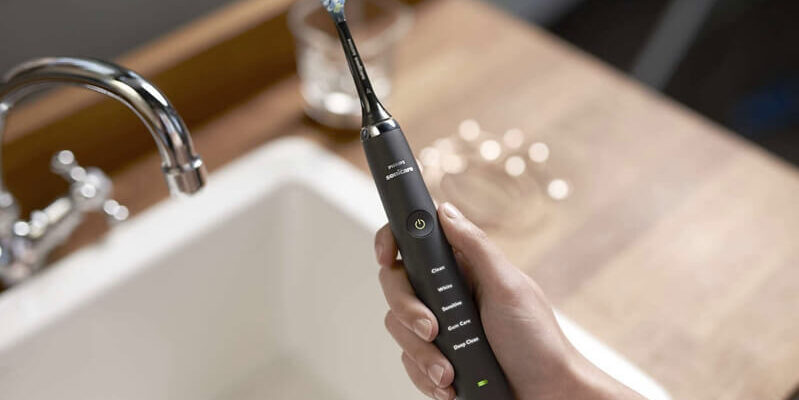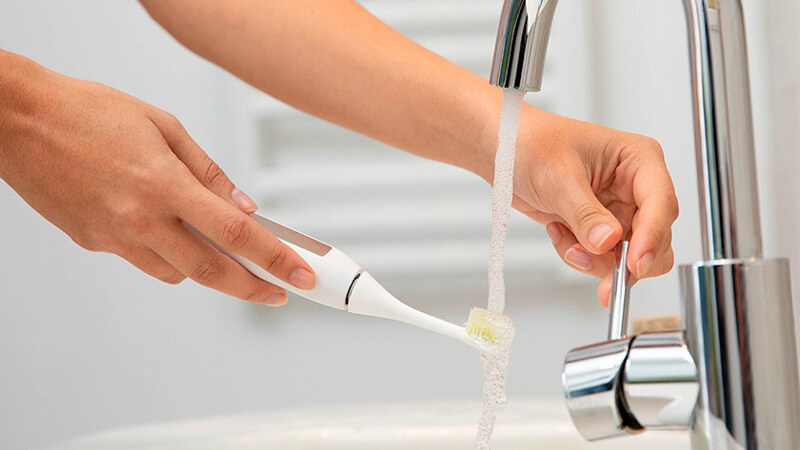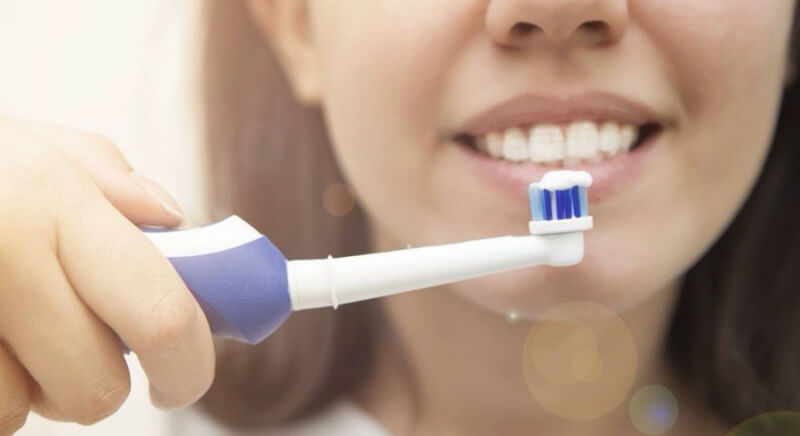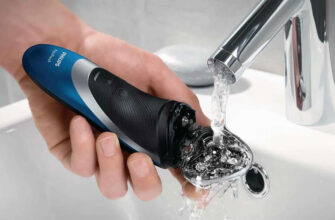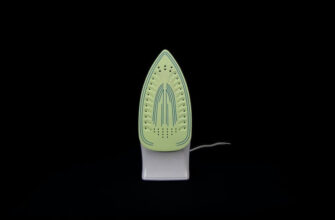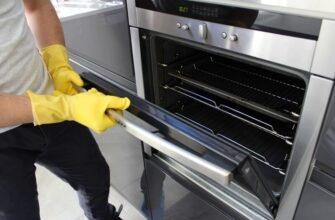Your electric toothbrush is in use every morning and every evening. The bristles of the attachment reach every corner and remove food residues, plaque and bacteria. You should therefore always make sure that the device itself remains clean and hygienic. Here you can read how to properly clean and care for your electric toothbrush.
Electric toothbrush: Daily cleaning
An electric toothbrush mixes saliva with toothpaste to clean food debris from spaces and teeth. If you don’t clean it before and after each use, this mixture will stick to the handle and brush. To avoid this, there are a few things you should keep in mind.
To prevent contamination
- Wash your hands thoroughly before picking up the toothbrush. This will prevent dirt from getting from your skin onto the device.
- Rinse the brush under warm water before each use. This will remove any traces of toothpaste or crumbs trapped between the bristles.
- After brushing, remove the brush head from the device. Run it under warm running water again to remove any residue.
- Tap out the brush and then shake off the water.
- You should also briefly hold the handpiece under the running water tap to remove toothpaste residue and water splashes. Then dry the device with a towel.
Proper storage of your toothbrush
- Always store the handpiece and brush separately. If you leave them together, rust can form.
- Do not store them in a cupboard or in a storage box.
- Place both vertically on a shelf or windowsill, in a bright place. This will allow both to dry in the fresh air and you will prevent bacteria from forming and multiplying.
Tip: Put the heads of your toothbrush in a brush holder. If you have several brush heads, always make sure that they do not touch each other.
How often you should change the brush heads
The bristles of your electric toothbrush should always be straight up and not fray toward the edge. If they are worn down, the brush won’t be able to clean your teeth of plaque as well. In addition, protruding bristles can injure the gums. Replace the brush head at least every three months. If the bristles are already damaged, replace the head earlier. This can happen if you brush your teeth more than twice a day or if you apply too much pressure when brushing.
Flu or cold: disinfect electric toothbrush?
You just got over a cold with a sore throat, tonsillitis and a cough. Could you catch it again if you don’t change your toothbrush attachment? True, the likelihood of this is low. But in the case of bacteria, there is at least the possibility that they will be transmitted again. This is especially true if you have not rinsed the brush properly or it has been wet for a long time. Instead of throwing away the brush head, you can disinfect it:
- Get some antibacterial mouthwash or a product used to clean braces or dentures.
- Pour some of the liquid into a glass and put the brush in with the head down. The bristles should be completely covered.
- Leave the brush in it for two to three hours and then rinse it thoroughly with water.
You should never clean the brush head in the dishwasher or microwave. This will damage the bristles.
Caution: Even if you have disinfected the brush head, you should change it after three months at the latest.
Removing water stains on the handpiece: With vinegar or dishwasher?
Even if you rinse the handpiece of your electric toothbrush every day, limescale stains can form. There is a particular risk of this if the water flowing from the tap tends to be hard. Other dirt can also accumulate over time. You should therefore inspect the handpiece regularly and clean it separately.
- More stubborn dirt can be cleaned with a drop of dishwashing detergent and a damp cloth.
- Vinegar helps against lime stains: Mix it with a little warm water and moisten a cloth or cotton pad with the solution. Wipe the handpiece with it.
- If this does not remove the lime deposits, wrap the cloth around the device for a few minutes and soak it. Then carefully scrub the plastic with a nail brush.
- Then rinse the handpiece thoroughly under running water and dry it.
- Place it upright so that the residual moisture can evaporate.
Caution: The handpiece should never be placed in the dishwasher. The electronics in the handle can be damaged during the rinsing process.
A clean electric toothbrush is more hygienic
You should clean your electric toothbrush after every use to prevent germs and bacteria from settling. It is enough to hold the brush head and the handpiece under running water. Make sure that no food residue or toothpaste stains remain. If limescale stains do form on the handpiece, remove them with vinegar, for example. You should always store the head and the device open and separate from each other. The brush head should be replaced every three months. If you have just been ill, you can change it earlier – or disinfect it.
The electric toothbrush when traveling: Store it correctly
You also want to take your electric toothbrush with you when you travel. However, you should not transport the brush attachment openly in your suitcase or toiletry bag. There they come into contact with dirt, dust and germs. In addition, the bristles can be crushed. Therefore, keep them in a toothbrush container or put a cap on the toothbrush.
You can also buy a travel case for the handpiece and brushes. Many manufacturers already include one with the device.

